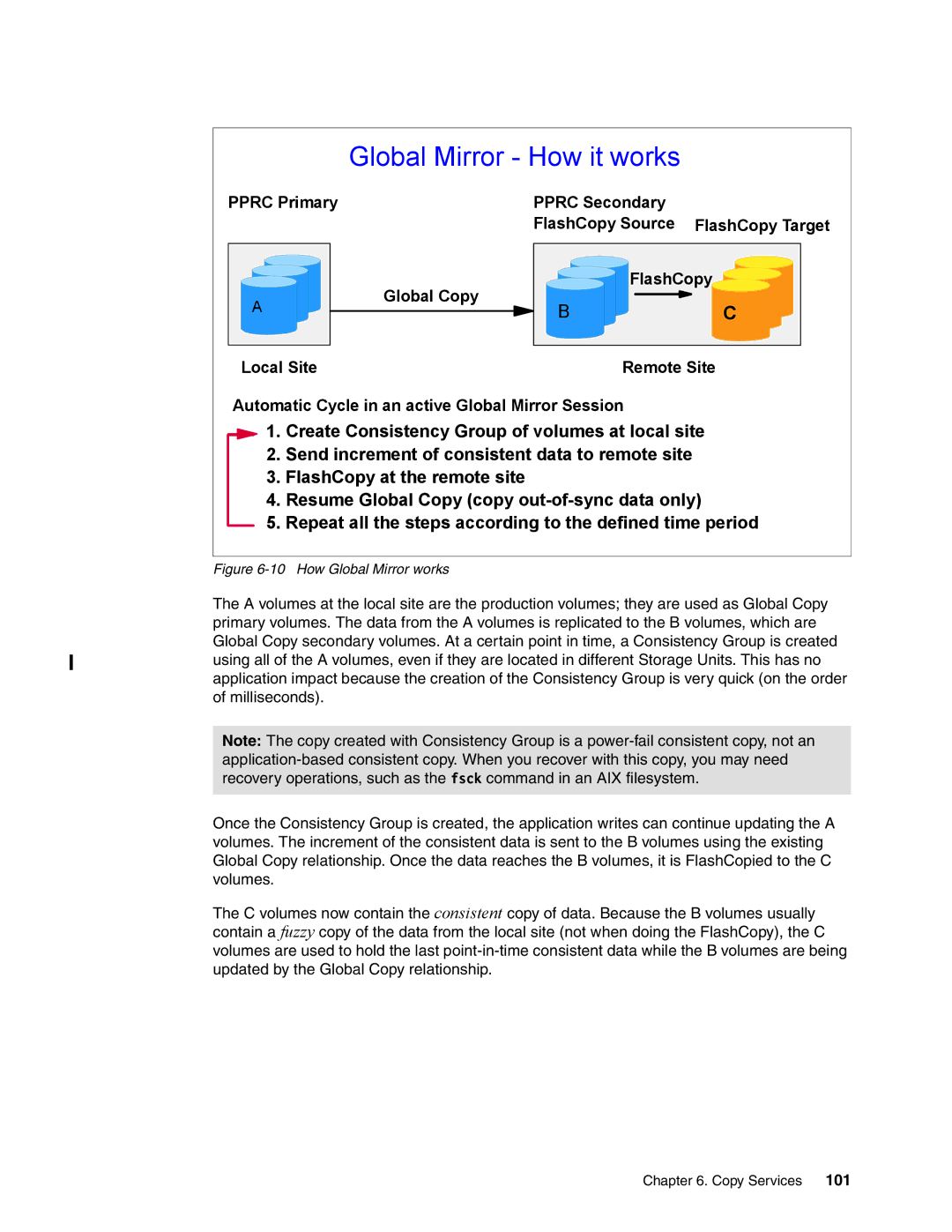
Global Mirror - How it works
PPRC Primary
PPRC Secondary
FlashCopy Source FlashCopy Target
A |
Local Site
Global Copy
| FlashCopy |
B | C |
Remote Site
Automatic Cycle in an active Global Mirror Session
![]() 1. Create Consistency Group of volumes at local site
1. Create Consistency Group of volumes at local site
2.Send increment of consistent data to remote site
3.FlashCopy at the remote site
4.Resume Global Copy (copy
5.Repeat all the steps according to the defined time period
Figure 6-10 How Global Mirror works
The A volumes at the local site are the production volumes; they are used as Global Copy primary volumes. The data from the A volumes is replicated to the B volumes, which are Global Copy secondary volumes. At a certain point in time, a Consistency Group is created using all of the A volumes, even if they are located in different Storage Units. This has no application impact because the creation of the Consistency Group is very quick (on the order of milliseconds).
Note: The copy created with Consistency Group is a
Once the Consistency Group is created, the application writes can continue updating the A volumes. The increment of the consistent data is sent to the B volumes using the existing Global Copy relationship. Once the data reaches the B volumes, it is FlashCopied to the C volumes.
The C volumes now contain the consistent copy of data. Because the B volumes usually contain a fuzzy copy of the data from the local site (not when doing the FlashCopy), the C
volumes are used to hold the last
Chapter 6. Copy Services 101
